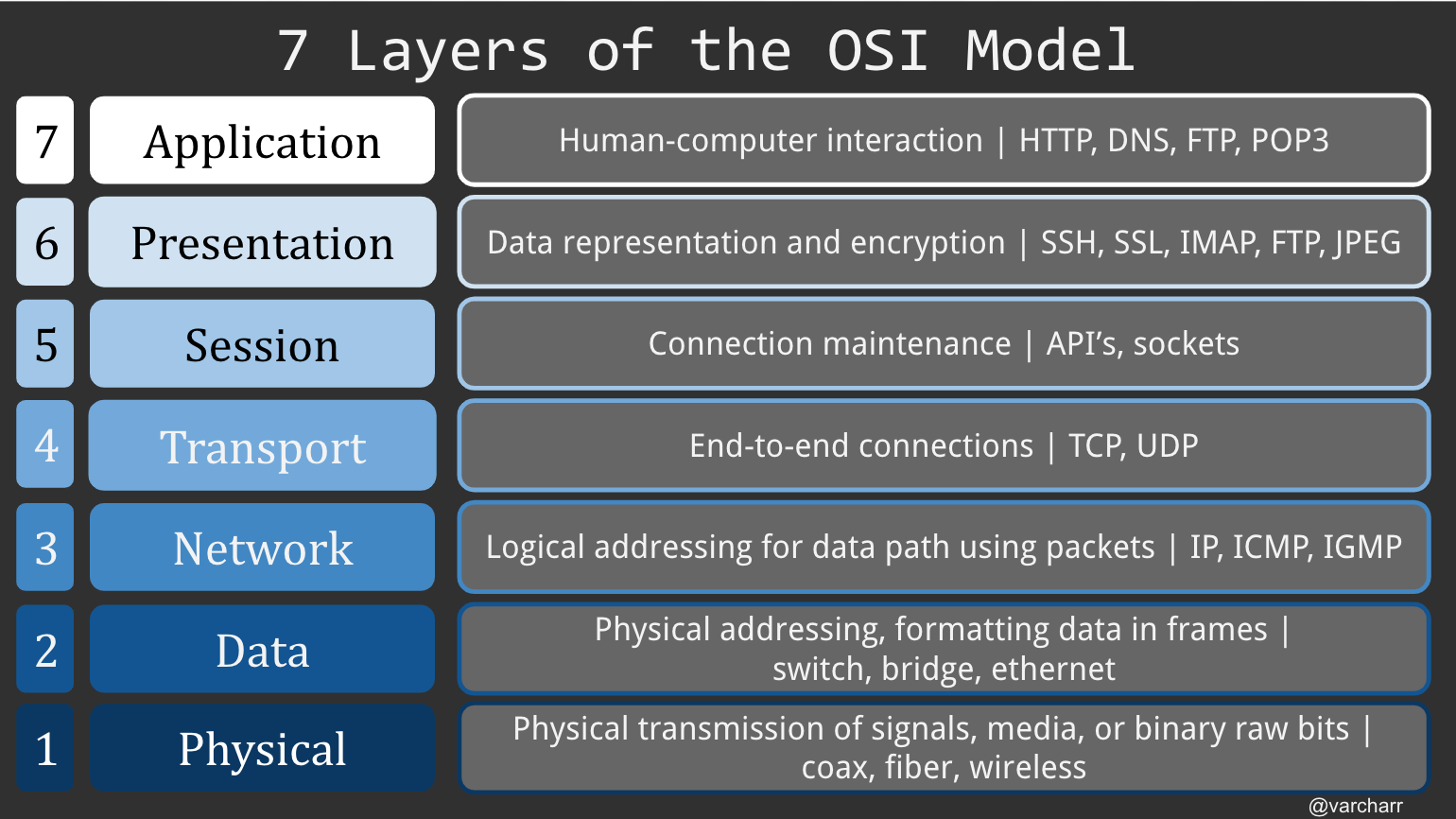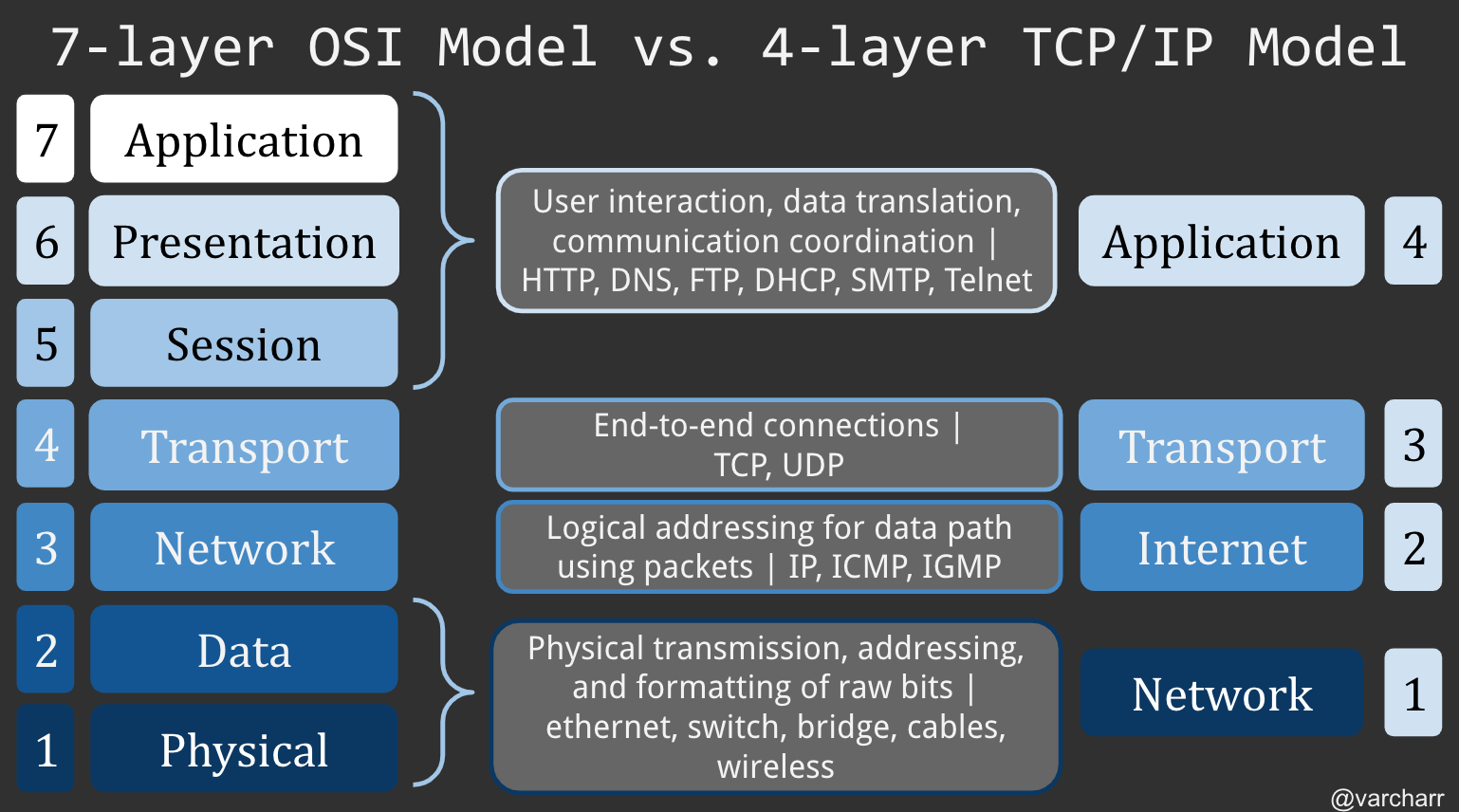OSI vs. TCP/IP: Comparing Network Models
In a recent post, we went over the OSI network model. Let’s review what that model looks like:

Now we can compare another model, the TCP/IP network model, to the OSI model. The TCP/IP model has become more ubiquitous since joining the network model party, and is therefore worth knowing in addition to the OSI model.
Here’s the TCP/IP model:

If you look closely, you’ll notice that it seems as if some of the OSI model layers have merged into some of the layers we see in the TCP/IP model. This is correct.
Let’s look at a side-by-side comparison:

Here, we can see that it is in fact the case that the bottom two layers of the OSI model make up the first layer of the TCP/IP model, while the top three layers of the OSI model are bundled up into layer four of the TCP/IP model. With TCP/IP, the application layer is in charge of initiating and maintaing sessions along with data translation, encryption, and human-computer interaction. The lowest layers of the OSI model, the physical and data layers, are referred to as the network layer in TCP/IP. In the TCP/IP network layer, the movement of bits physically over wireless or cables as well as data fram construction are included.
The middle layers, the network/internet (OSI/ TCP/IP, respectively) and transport layers, share the same purposes.
It’s useful to be familiar with both models for the purpose of discussing and breaking down different aspects of networking. For more information about the transport layer protocols UDP and TCP, check out this blog post.